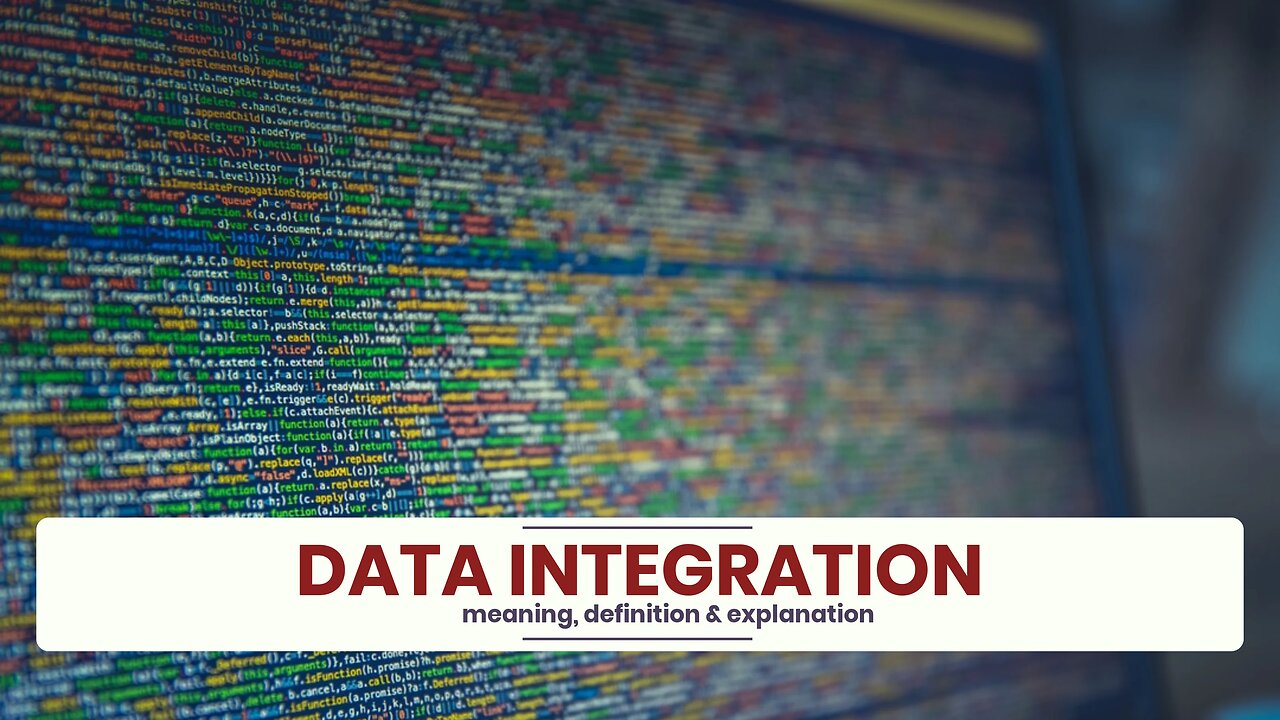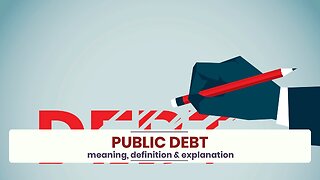Premium Only Content

What is DATA INTEGRATION?
✪✪✪✪✪
http://www.theaudiopedia.com
✪✪✪✪✪
What does DATA INTEGRATION mean? DATA INTEGRATION meaning - DATA INTEGRATION definition - DATA INTEGRATION explanation. What is the meaning of DATA INTEGRATION? What is the definition of DATA INTEGRATION? What does DATA INTEGRATION stand for? What is DATA INTEGRATION meaning? What is DATA INTEGRATION definition?
Data integration involves combining data residing in different sources and providing users with a unified view of them. This process becomes significant in a variety of situations, which include both commercial (such as when two similar companies need to merge their databases) and scientific (combining research results from different bioinformatics repositories, for example) domains. Data integration appears with increasing frequency as the volume and the need to share existing data explodes. It has become the focus of extensive theoretical work, and numerous open problems remain unsolved.
Consider a web application where a user can query a variety of information about cities (such as crime statistics, weather, hotels, demographics, etc.). Traditionally, the information must be stored in a single database with a single schema. But any single enterprise would find information of this breadth somewhat difficult and expensive to collect. Even if the resources exist to gather the data, it would likely duplicate data in existing crime databases, weather websites, and census data.
A data-integration solution may address this problem by considering these external resources as materialized views over a virtual mediated schema, resulting in "virtual data integration". This means application-developers construct a virtual schema—the mediated schema—to best model the kinds of answers their users want. Next, they design "wrappers" or adapters for each data source, such as the crime database and weather website. These adapters simply transform the local query results (those returned by the respective websites or databases) into an easily processed form for the data integration solution (see figure 2). When an application-user queries the mediated schema, the data-integration solution transforms this query into appropriate queries over the respective data sources. Finally, the virtual database combines the results of these queries into the answer to the user's query.
This solution offers the convenience of adding new sources by simply constructing an adapter or an application software blade for them. It contrasts with ETL systems or with a single database solution, which require manual integration of entire new dataset into the system. The virtual ETL solutions leverage virtual mediated schema to implement data harmonization; whereby the data are copied from the designated "master" source to the defined targets, field by field. Advanced data virtualization is also built on the concept of object-oriented modeling in order to construct virtual mediated schema or virtual metadata repository, using hub and spoke architecture.
Each data source is disparate and as such is not designed to support reliable joins between data sources. Therefore, data virtualization as well as data federation depends upon accidental data commonality to support combining data and information from disparate data sets. Because of this lack of data value commonality across data sources, the return set may be inaccurate, incomplete, and impossible to validate.
One solution is to recast disparate databases to integrate these databases without the need for ETL. The recast databases support commonality constraints where referential integrity may be enforced between databases. The recast databases provide designed data access paths with data value commonality across databases.
-
 1:41
1:41
The Audiopedia
9 months agoWhat is PUBLIC DEBT?
53 -
 2:04:42
2:04:42
TimcastIRL
2 hours agoStock Market BLOODBATH After China Places 34% Tariff On US, Trump HOLDS FIRM | Timcast IRL
88K79 -
 1:38:36
1:38:36
Glenn Greenwald
4 hours agoProf. John Mearsheimer on Israel's Destruction of Gaza, Trump Admin Attacks on Universities & Speech, Yemen Bombings, Tariffs & Competition with China; Plus: Q&A with Glenn | SYSTEM UPDATE #434
85.7K41 -
 LIVE
LIVE
Alex Zedra
1 hour agoLIVE! Playing Verdansk all night
385 watching -
 LIVE
LIVE
SynthTrax & DJ Cheezus Livestreams
1 day agoFriday Night Synthwave 80s 90s Electronica and more DJ MIX Livestream Trip-Hop SPECIAL EDITION
587 watching -
 LIVE
LIVE
I_Came_With_Fire_Podcast
9 hours agoTARIFF TAKEOVER | REDCOATS 2.0 | DOGE FINDS SOMETHING HORRIBLE
198 watching -

FusedAegisTV
7 hours agoRumble Smackdown! #001 Street Fighter 6 $500 Online Tournament
25.1K3 -
 55:58
55:58
BonginoReport
4 hours agoCan Trump Make TikTok Great Again? (Ep. 20) - Nightly Scroll with Hayley Caronia - 04/04/25
102K54 -
 LIVE
LIVE
Jorba4
1 hour ago🔴Live-Jorba4- COD WARZONE- VERDANSK FRIDAY. Hot drops W/ XxXAztecWarrior and Lumpy Potato X2
86 watching -
 4:33:11
4:33:11
Nerdrotic
6 hours ago $24.62 earnedPost-Apocalyptic Woke Hollywood, MineCRAP, CinemaCONNED - Friday Night Tights 348, Chris Gore & Rags
92.6K14